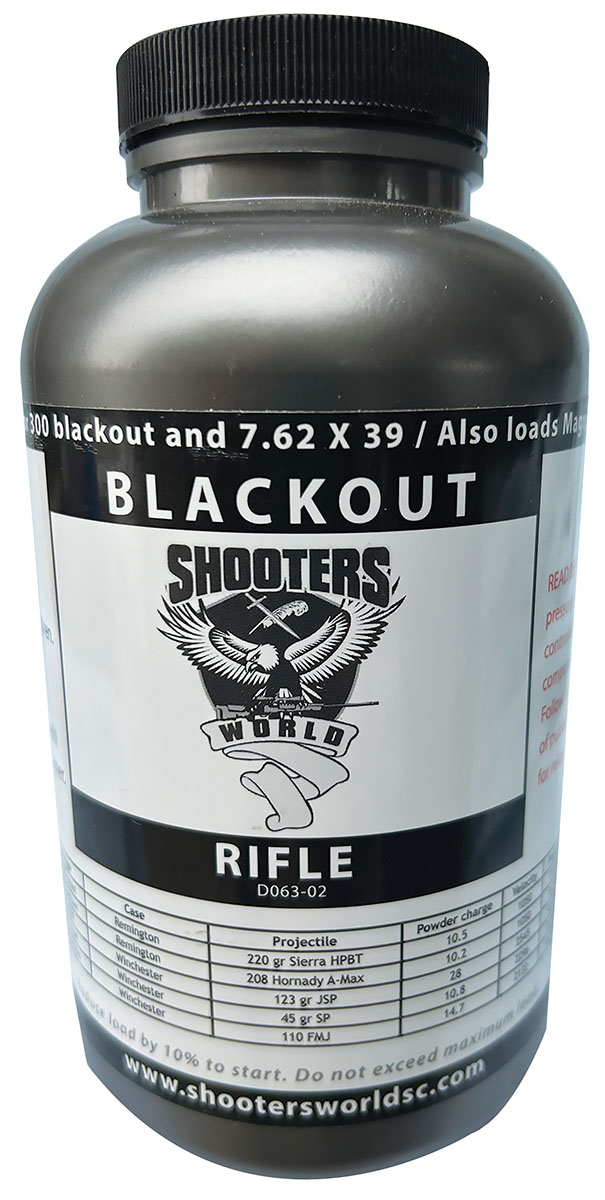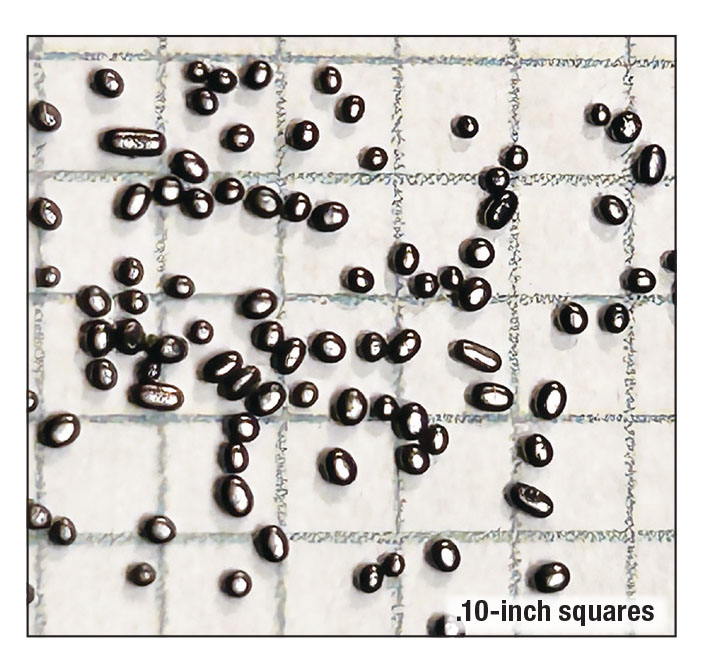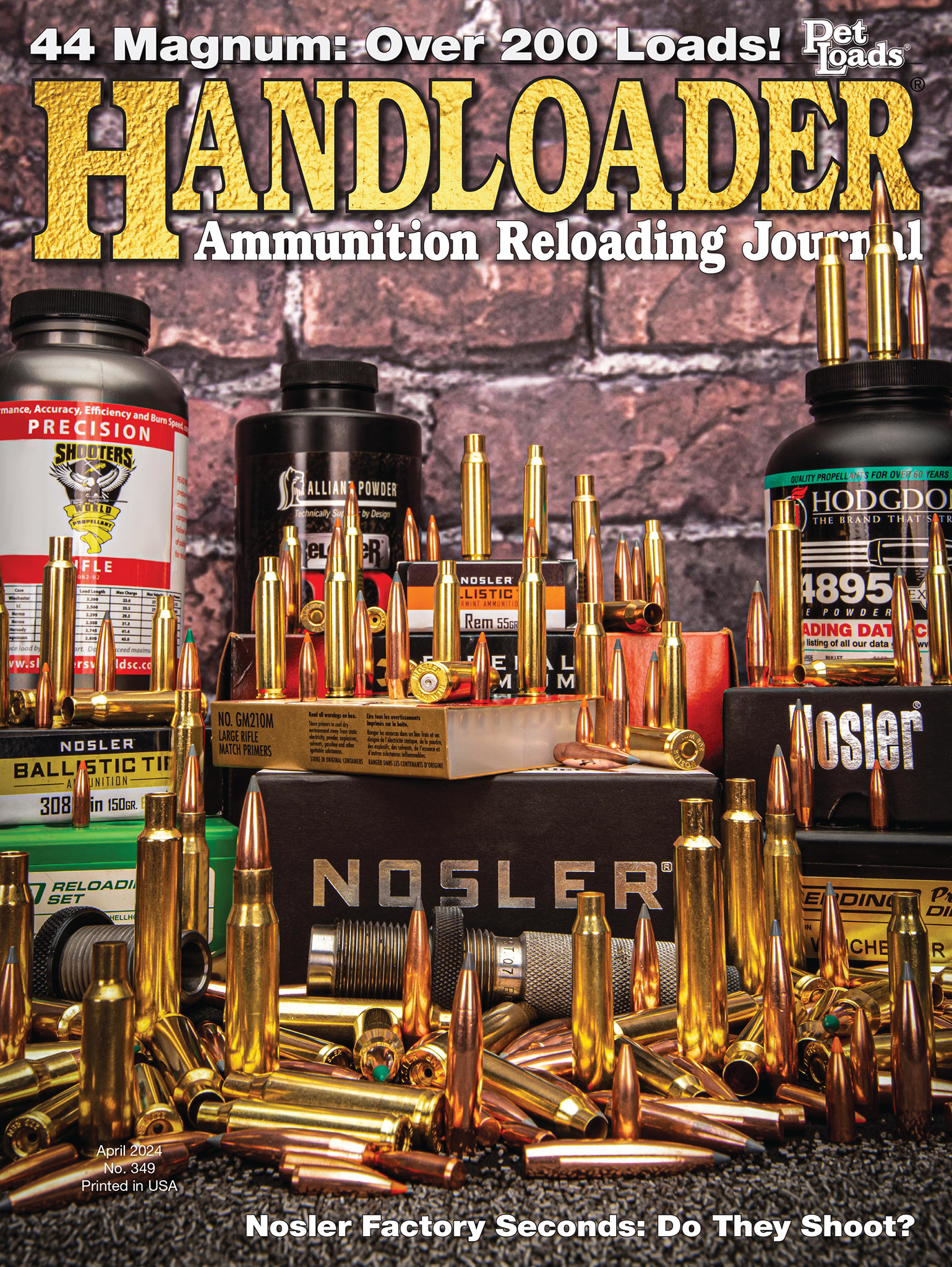Propellant Profiles
Shooters World Blackout
column By: Rob Behr | April, 24

With only a few cartridges matching W-680’s performance characteristics, most notably the 22 Hornet, Winchester quietly dropped the powder from its consumer line in 1983 due to poor sales. The burn-rate was resurrected by Accurate Arms a few years later and marketed as Accurate Arms 1680. Over the next several decades, the shooting market changed in ways that favored A-1680.
The collapse of the Soviet Union in 1991 brought an influx of inexpensive rifles chambered for 7.62x39mm to the American market. This cartridge was so well matched to A-1680 that some speculated that it had been created for that cartridge. Interest in magnum handguns brought wildly powerful cartridges like the 500 S&W to market. The case capacities of these monsters favored A-1680 and brought new utility to a propellant that had been intended initially for small capacity rifle cartridges. Finally, consumer interest in the AR-15 platform drove designers to offer cartridges compact enough to fit within the confines of its 2.260-inch magazine length. These cartridges included the 6.8 SPC, 350 Legend and 300 AAC Blackout, which are all well suited to A-1680. It turned out that the 680/1680 burn rate had been ahead of its time.
Shooters World Blackout, like Accurate 1680, is a double-base spherical powder comprised of 80 percent nitrocellulose and 15 percent nitroglycerine. Physically, each grain is uniformly dark gray to black in color. The grains are not uniform, instead they present a variety of rounded shapes running from truly spherical to a small percentage that are cylindrical. The vast majority of the grains fell somewhere near .015-inch in diameter and about .024-inch in length. The powder’s bulk density, which is what makes it so useful in smaller capacity cartridges, is a compact .96 g/cc.
Testing Shooters World Blackout in a 300 Blackout was obviously required. Luckily, I had a very nice 16-inch Proof Research barreled carbine that was more than up to the task. Shooters World listed two different subsonic loads, with both showing anticipated velocities of 1,050 feet per second (fps). The heavier of the two, a Sierra 220-grain MatchKing, used a charge weight of 10.5 grains. The other bullet was a Hornady 208-grain charged with 10.2 grains. I was surprised that the heavier bullet also had a higher charge mass, but the ways of internal ballistics are sometimes inscrutable.

Supersonic loads in a 300 Blackout are a lot of fun. With very little recoil and enough energy to reliably handle close range deer, the 300 Blackout has replaced a 30-30 Winchester as my brush gun of choice for whitetails. Using Remington 150-grain PSP bullets and a compressed charge of 18 grains of Blackout produced 1,726 fps. This time, the rifle cycled perfectly.
As a comparison, I tested A-1680 using the same charge mass and bullets. These loads produced an average of 1,763 fps, representing a modest 2 percent gain in velocity over Blackout. However, Blackout produced notably lower extreme spreads. The consistency of Shooters World powders impresses me.
Following up on my brush hunting theme, I tested a Model 94 Winchester in 30-30 Winchester. The 94’s elegant lines and the mild-mannered 30-30 are always a pleasure in the field. My first shots though, proved to be milder than anticipated. Using Shooters World’s maximum recommended load of 24.2 grains and a Sierra 150-grain FN, the average velocity was a disappointing 1,825 fps. Shooters World’s published data, which was updated in June 2023, had anticipated a velocity of 2,256 fps using an unstated barrel length.
When I returned from the range, I found that the company’s interactive manual, which is very nicely executed, provided different data for the same bullet and powder combination. The interactive guide set 25 grains as a starting load and 27.4 as a maximum charge. Based on my results, the interactive guide’s higher charges seem to better match real-world 30-30 Winchester performance.
Let’s cut to the chase here. I am the type of masochist who really likes 22 Hornets. I bought my first one in my early twenties, loading it with W-680 had me hooked. I was looking forward to testing Blackout in my friend, Bill Buzzell’s newly acquired Winchester 43. The first shot from that beautiful old rifle produced 2,267 fps using a Sierra 40-grain Hornet softpoint. After three strings had been fired, the average velocity had settled in at 2,281 fps with an extreme spread of 39 fps. That spread owed itself to one inexplicably faster round. Hornets are full of heartbreak. Nonetheless, I wish he would sell me that rifle.
I came away impressed by Shooters World Blackout. A market once dominated by A-1680 has a true competitor.
.jpg)


